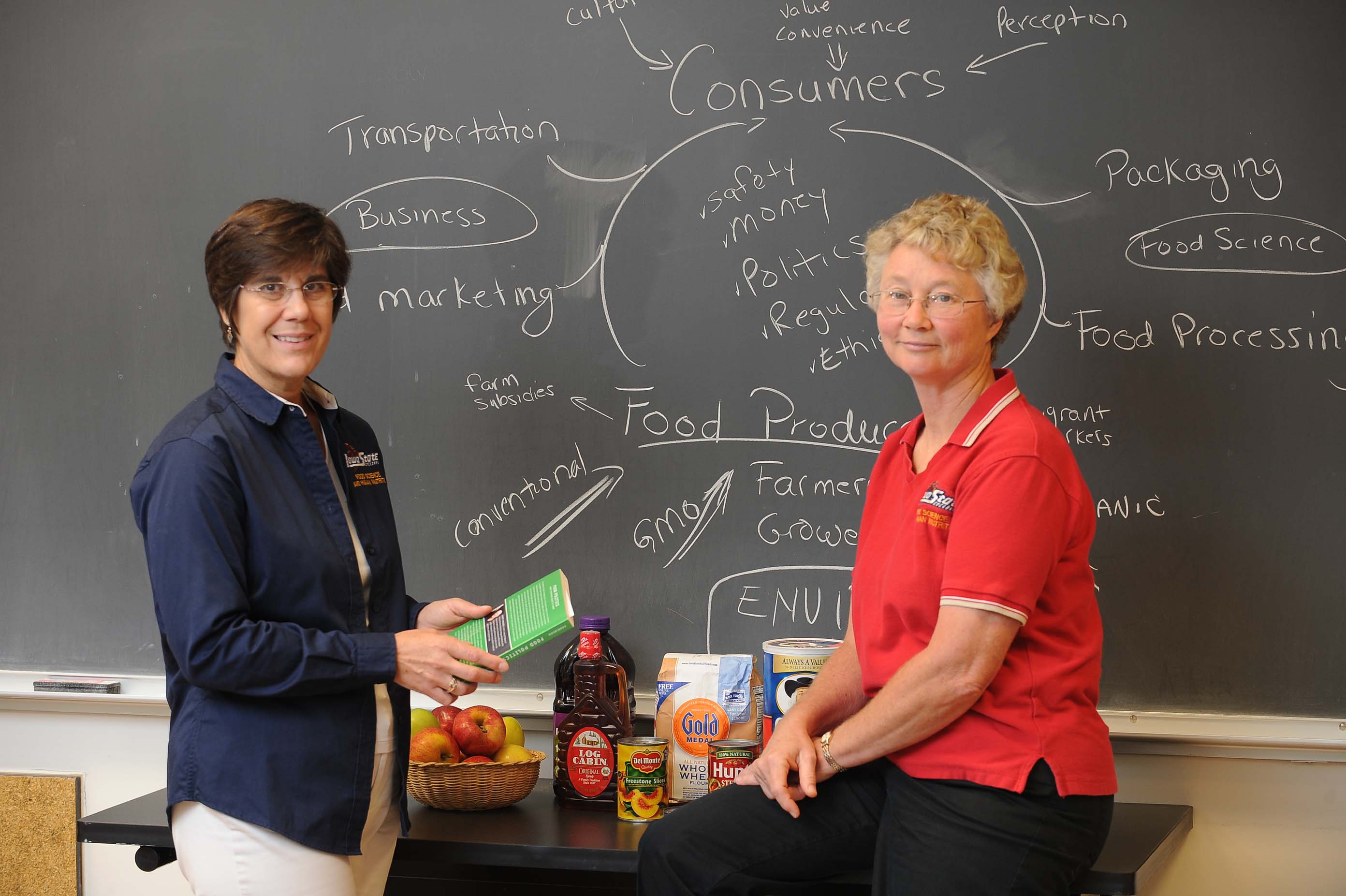
Food Systems 101
A new class challenges students to grasp the complexity of food systems and to better understand food production issues.
The Societal Impact on Food Systems course was offered for the first time last spring. It was taught by Ruth MacDonald, professor and chair of the Department of Food Science and Human Nutrition, and Cheryll Reitmeier, professor and associate chair of food science and human nutrition.
“Everyone makes food choice decisions throughout their lives,” says MacDonald. “The goal was to make students think about food, understand context and evaluate the impact of food choices on their health, the environment and society. The course focused on the broad spectrum of food systems and to try to see it in its entirety to put a framework around discussions.”
Last spring’s class of 13 undergraduates was a casserole of majors, from animal science, food science, French and English, and diverse personal perspectives, from farm-raised to urban, from meat lovers to vegetarians.
They learned about issues in food safety and links to environment and health; types of food systems; history, trends and components in processing, packaging, transportation and marketing; defining the current U.S. food system; influences of economics, public policyand politics and food systems; and role of consumers, government, farmers, retailers and other stakeholders.
From day one, students were encouraged to engage in discussion and debate, share experiences and think through their ideas in writing. One exercise was to write a letter to Congress about a current agricultural policy or food safety issue.
They surveyed other students on what they knew about agriculture and the food system. They met with a molecular biologist who was on campus to speak about a book on genetically modified foods.
Discussions were stimulating and, at times, passionate about topics such as migrant workers in agriculture and what kinds of food and soft drinks should be allowed in high schools. “There were a lot of eye-opening moments for everyone in the discussions. One of our class expectations was to be respectful and nonjudgmental, allowing everyone to voice ideas and allowing acceptance of opposing viewpoints,” says MacDonald.
The final project was a team presentation on a chosen topic. “The teams had members who had studied the pros and those who had studied the cons, and then they had to come together and have a consensus. It wasn’t easy,” she says.
But that’s the real world, MacDonald says. “Students learned that as adamant as they can be in making their case, in the end, you need to make a decision. Being dogmatic and saying we must do this or that ignores other perspectives or situations. There are many factors involved in making decisions on our food choices. They include our resources and time, ethical beliefs and also what our friends and neighbors are saying. In some cases, your decision may be ‘It depends.’”
The course will be offered again in the spring of 2012. In the future, the instructors will look into making it available more broadly online.
“I feel everyone would benefit from a course like this,” MacDonald says. “We wanted to put issues in front of students to think through and build on what they’re learning in their other classes. If they begin to have a holistic view on mfood systems, it may be helpful in navigating the bewildering array of information they’re bombarded with each day and help them put it into context.”
Click here for MacDonald’s wild rice soup recipe.



